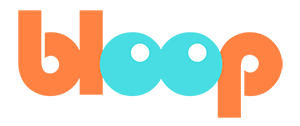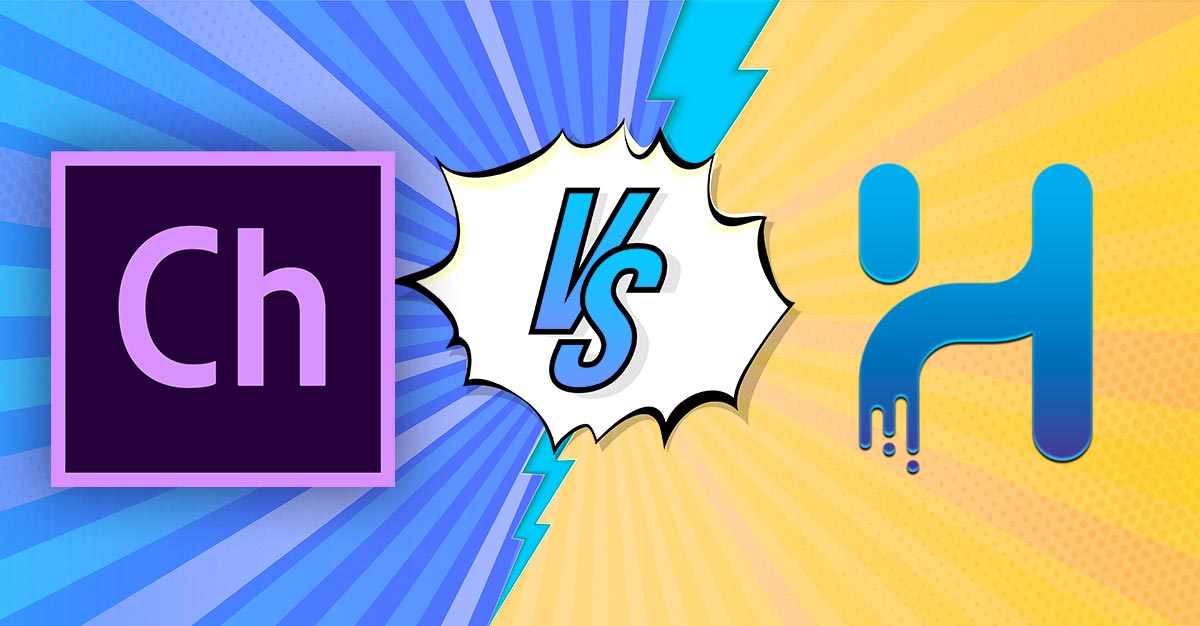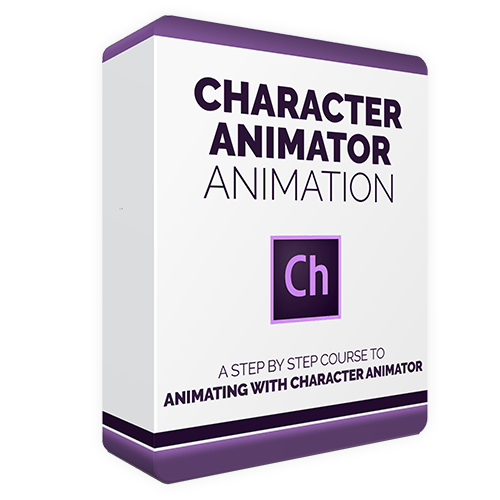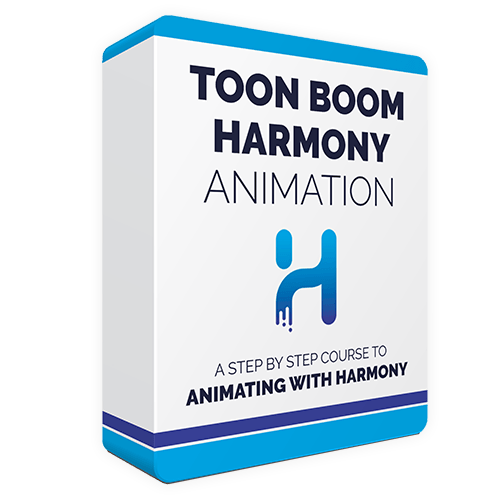If you’re looking into producing animated content, there’s a wide array of software and techniques to explore. In this article we’ll look at two software that represent different approaches creating animation: Character Animator and Toon Boom Harmony.
Character Animator is designed around sidestepping the traditional labor-intensive process of animating characters by hand, allowing content to be made quickly even by artists without animation experience.
Toon Boom Harmony is an industry standard software that's used on professional productions. It provides features for both traditional hand-drawn animation and rigged character animation. It’s a tool for people who want to become professional animators.
In this post we'll look at the core differences between these programs to find the one that best suits your needs.
In other words: Character Animator vs. Toon Boom Harmony. Which one should you use?
Contents:
Use Cases
Character Animator
The big hook of Character Animator is that you can use input from a camera and microphone to do real-time performance capture and automatically animate characters. This saves a huge amount of time.
However this is only really suitable for cartoons that feature mostly dialog scenes and not a ton of action or physical gags.
For example Showtime’s Our Cartoon President is made using Character Animator. This show is almost all dialog based scenes, so everything can be done with performance capture.
Also, it deals with topical humor so it benefits from the ability to animate scenes very quickly instead of the months it normally takes to get out an episode of animation.
The other unique use-case for Character Animator is the ability to do live interaction with a 2D animated Character.
Because the character's performance is driven by an actor in real-time, the output from Character Animator can be incorporated into a live broadcast. Cartoon Trump actually started as a live bit on The Late Show:
Character Animator characters can also be integrated into VR and AR scenarios like this Ninja Turtles Event from Nickelodeon Studios:
Toon Boom Harmony
Toon Boom Harmony is a very feature-rich and versatile program that is an industry standard for all kinds of animation productions.
It has a great feature set for a traditional 2D animation pipeline, which makes it excellent for feature films and high-quality commercial work. It also has the most sophisticated system for creating 2D rigged puppet animation which makes it perfect for TV series animation where keeping characters consistent and reusing artwork to save time is a huge advantage.
Here’s some examples of great pieces done with Toon Boom Harmony:
https://youtu.be/rkdN3sCtwtU
Character Animator vs. Toon Boom Harmony: Main differences
Character Animator:
- Dialog-heavy Content
- Content with a very tight schedule
- Live Interaction
Toon Boom Harmony:
- Film and TV
- Large Productions
- Puppet Characters / Hand Drawn Animation
Learning Curve
Character Animator
Character Animator is especially easy to pick up.
That is because Character Animator is designed for a very specific method of animation. There’s a very clear workflow to follow and not a lot of extraneous features to distract you.
Character Animator is designed around making the process of animating intuitive and non-technical. If you are less interested in learning animation skills and more interested in bringing your ideas to life ASAP, this is the choice for you.
Toon Boom Harmony
The learning curve with Toon Boom Harmony can be difficult. There is a lot to learn depending how deep you want to go. It’s easy enough to get started doing basic frame-by-frame animation, but to really take advantage of Harmony, there are specific techniques and best practices that are definitely worth it to learn.
This is particularly true if you want to get into Harmony’s advanced character rigging features or its nodal compositing system. These are specialties that are very powerful, but you don’t necessarily have to dig into at all if you don’t want to.
Art Tools
Character Animator
Character Animator doesn’t have any tools for creating artwork. Instead it works in tandem with either Adobe Illustrator or Photoshop.
You build a character with its individual parts as separate objects in Illustrator, or on separate layers in Photoshop, and then use Character Animator to rig those pieces together into an animatable puppet.
Toon Boom Harmony:
Toon Boom Harmony has both bitmap and vector drawing tools. The bitmap drawing tools allow for more natural sketching and painterly effects, and Harmony’s vector tools are for creating nice clean finished inked and painted artwork.
Vector lines can also have styles applied to them that replicate the look of more traditional looking media.
Harmony has historically been more focused on it’s vector art tools and many of it’s more advanced features and core workflows are intended to be used with vector-based finished art.
Animation Features
Frame-by-Frame Animation
Toon Boom Harmony has excellent tools and features for doing frame-by-frame animation and replicating the workflow of a traditional 2D pipeline. From rough animation, to clean-up/coloring, to final compositing, Harmony has everything you need.
Character Animator doesn’t have any frame-by-frame animation capabilities. If you prepare a frame-by-frame in another program, you can import the frames and use it in a project. There’s just no way to draw them in Character Animator.
Rigging Character Puppets
Character Animator is based entirely around creating rigged puppets. By naming the pieces of your character according to Character Animator’s conventions, the program will be able to automatically animate the character using video performance capture. You also do have the ability to pose the figure and set keyframes by hand.
Harmony also has extremely powerful features for making rigged character puppets. It’s easy to add basic bones and deformers to a character to make them easier to pose and animate, or with some more work and know-how you can build very versatile full-turnaround character rigs that can repurposed for just about any scene. Many shows made in ToonBoom might be using rigged characters without you even noticing.
Of course the big difference between the systems is that in Harmony you need to pose your characters and set keyframes by hand which takes an understanding of animation principles. Character Animator is designed around bypassing that phase of the process.
Performance Capture Animation
This is the main selling point of Character Animator. After you have built a character puppet you can use a camera to record your face and body performance in real-time to generate a performance for your animated character.
You can deliver your performance live to your audience, or record the performance to your project timeline and refine it further by hand. The voice and physical performance can be done simultaneously or separately.
Toon Boom Harmony doesn’t have anything like this.
Other Factors
The most unique feature of Character Animator, as noted above, is its ability to be used for live interactive performances. The live output of character animator can be piped into broadcasting software like OBS to be used for live streams or projected for in person performance. Character Animator is the best system for doing this kind of live performance with 2D characters.
Cost
Character Animator
Character Animator is only available through Adobe’s Creative Cloud subscription plan. Unfortunately it is not available individually and can only be purchased as part of Adobe’s All Apps plan.
|
Monthly Plan |
Annual Plan (paid Monthly) |
Annual Plan (pre-paid) |
|
|
ALL Adobe Apps |
$79.49/mo |
$52.99/mo |
$599.88/yr |
But remember... you’ll need either Photoshop or Illustrator to make your puppets, so you would need to buy at least one other app anyway.
Toon Boom Harmony
The pricing for Toon Boom Harmony depends on which version you buy.
- Harmony Essentials is good if you’re just getting started.
- Harmony Advanced adds bitmap painting tools and more support for a traditional hand-drawn workflow.
- Harmony Premium adds more advanced character rigging and a node-based compositing system for advanced visual effects and rendering.
You can buy Harmony either as a subscription plan or as a one time permanent license.
|
Harmony Essentials |
Harmony Advanced |
Harmony Premium |
|
|
Annual Subscription |
$15/mo |
$39/mo |
$75/mo |
|
Monthly Subscription |
$24/mo |
$60/mo |
$112/mo |
|
Perpetual License |
$390 |
$1005 |
$2035 |
Character Animator vs. Toon Boom Harmony - How do you choose?
Who won the Character Animator vs. Toon Boom Harmony fight?
Choose Character Animator if your project has a lot of “talking heads” content that you don’t want to spend the time animating by hand.
Also definitely choose Character animator if you want to be able to perform with your charters in real-time over live stream or at in-person events.
Go with Toon Boom Harmony if you’re looking to invest time in learning a powerful industry-standard program that offers the flexibility to do either traditional frame-by-frame animation or rigged-puppet animation.
Get started
Bloop has animation-focused courses for both programs, so you can jump in and learn all the tools you need to know to get started animating.



